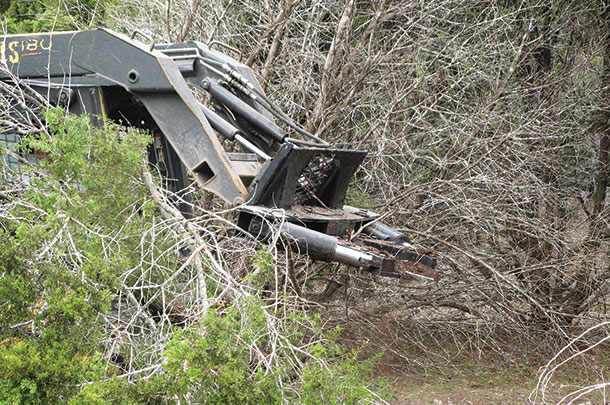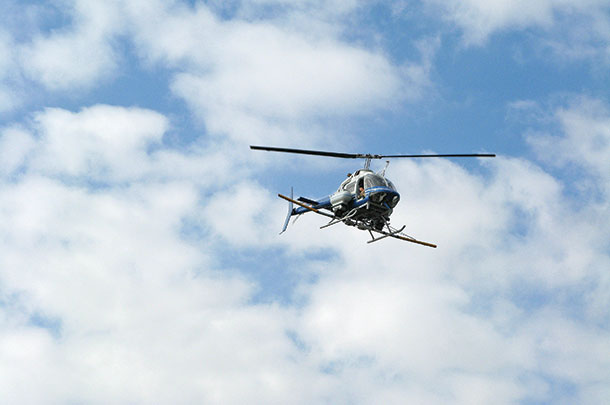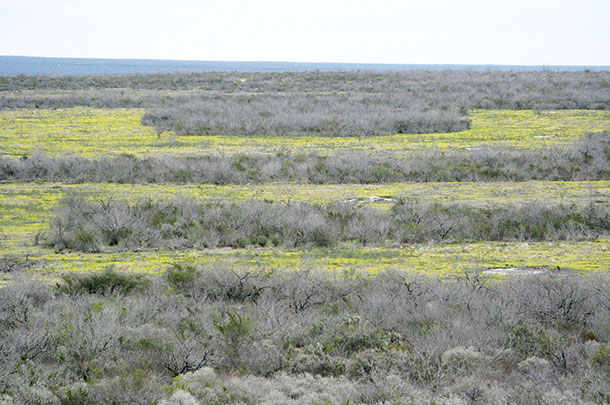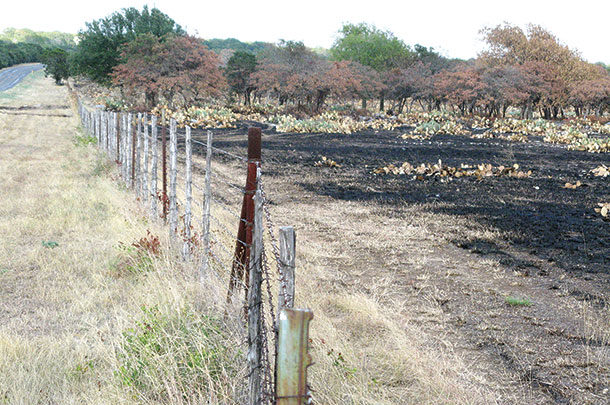Weed control is almost as old as history. Man has attempted to control unwanted vegetation from the time he transitioned from a nomadic life of hunting and gathering to farming. This transition is known as the Neolithic revolution and occurred worldwide between 10,000 B.C. and 2,000 B.C. Farming and raising livestock tied people to the land for cultivation and grazing, which gave rise to permanent settlements.
Where we’ve been
Need for weed control was created by the advent of agriculture, so the practices have very similar histories. Three ages or periods of agriculture occurred. The first was a period of blood, sweat and tears resulting in fatigue and famine.

This period could also be called the hand age because everything was accomplished by human strength. Soil was tilled with a stick, weeds were hand-pulled (usually by women and children), and brush was cut with a stone axe. The stick was replaced by the hoe as a weed-control and tillage tool as far back as the 18th century B.C.
The next significant transition occurred in the early 1700s when the mechanical age emerged. In 1701, Jethro Tull, an Englishman, designed a seed drill with a rotating cylinder that was pulled by a horse. Grooves were cut into the cylinder to allow seed to pass from the hopper through a funnel into a channel dug by a plow at the front of the machine then immediately covered by a harrow attached to the rear.
This limited seed waste and made the crop easier to weed. Soon afterward, Tull invented the horse hoe that uprooted weeds and brush, leaving them on the surface to die.
The chemical age was the third stage of agriculture and weed-control development. As early as 1200 B.C., armies used salt and ash to destroy their enemies’ crops. In 470 B.C., Democritus, the Greek philosopher, cleared forests by soaking lupine flowers in hemlock juice for one day and then sprinkling the solution over tree roots.
Theophrastus, a successor to Aristotle, killed trees by pouring olive oil over their roots in 400 B.C. Salt was used for selective and non-selective weed control through 1854 AD.
From about 1759 through about 1930, an array of inorganic chemicals was used for weed control including ferrous sulfate, copper sulfate, sulfuric acid, sodium arsenate and sodium chlorate. The first introduction of an organic herbicide, dinitro-ortho-cresol (DNOC) was in 1932. The registration was cancelled by the EPA in 1991.
In 1940, ammonium sulfamate (Ammate) became available for brush control, and 2,4-D was recognized as a weed- and brush-control herbicide in 1944. MCPA (mecroprop) was first tested as an herbicide in 1945.
Monuron (Telvar) appeared in 1951, followed by atrazine and paraquat in 1958. Trifluralin (Treflan) and pyridines (Tordon 22K, Remedy and Reclaim) were introduced in the 1960s. During the ’70s, sulfonylureas (Harmony, Glean, Escort, Ally and Oust) were launched, and in 2003 pyrimidines (Python and Sonic) became available.
Where we’re going
As you study the chronology of herbicide development, you find that application rates went from quarts per acre to fluid ounces per acre. Each new generation of herbicides leaves less chemical residue in soil and in water for shorter periods of time.
“Herbicide application technology has improved tremendously, due to the efforts of agriculture engineers and equipment manufacturers,” says Mark Matocha, Texas A&M AgriLife Extension Service.
“The industry has moved from brass flat-fan nozzles on a boom to flood nozzles that produce larger spray particles that help reduce spray drift. We have also learned to position spray nozzles in a manner to put more herbicide on target plants and less in the air stream."
“Relatively new GPS (global positioning system) technology allows better spray coverage of the target area without skips and overlapping of spray swaths,” Matocha says. “The swath width is entered into the GPS, and after the first swath is completed, a light bar guides the operator."

"As long as the spray vehicle is kept in the middle of the green portion of the light bar, it is in the correct position. Advantages of this system are that herbicide is not wasted and the entire area is evenly sprayed.”
In the 1940s, chemical weed and brush control was predominately achieved with either ground or aerial broadcast applications with intent to leave nothing but the grass.
As wildlife management became more profitable to the rancher, individual plant treatments (IPT), such as stem sprays, leaf sprays and cut-stump treatments, were developed. When broadcast treatments were applied, areas of woody plants were kept for wildlife cover.
“Mechanical weed and brush control followed a similar path of development,” says Wayne Hanselka, range management consultant. “The grubbing hoe was used in Biblical times to dig and pile brush. In the mid-1930s, root plows were pulled by horses or steam tractors, and in the early 1940s, shredders mounted behind tractors or circular saws mounted on the sides were used.
In the mid-1940s, brush control was mostly from fence to fence with root plows or roller choppers pulled by large crawler tractors or with an anchor chain pulled by two large dozers. These two methods caused a large amount of soil disturbance, which made it necessary to sow grass seed in order to establish pastures.
“Due to the increased interest in wildlife, a large amount of brush is presently cleared in strips alternating with strips of untreated brush and trees,” Hanselka says. “Edges of the strips are usually on contours, a process which is commonly called brush sculpting."
"Mechanical IPT has also become a popular method of brush and tree removal, mostly accomplished by various forms of backhoes. In the future, mechanical brush control will become more targeted, more efficient and more effective.”
“Weed and brush control will remain an important agricultural production tool because it is necessary for raising enough food to feed an ever-growing world population,” says Charles Hart, Dow AgroSciences. “By 2050, the U.S. Census Bureau estimates a world population of 9.5 billion people, an approximate 2.5-billion increase during the next 33 years.

When more people become hungry, there will be fewer concerns from an uninformed public on how land stewards manage agricultural assets, and there will be less pressure to ban proven brush- and weed-control products and techniques.
“Regardless of public pressure, chemical weed control will change in the future,” Hart says. “Due to urban sprawl and fragmented agricultural land, there will be more restrictions on herbicide applications."
"In order to comply with the restrictions, improved drift control methodology will produce more consistent spray droplet size, facilitating precise application and a smaller percentage of the applied herbicide being absorbed by non-target plants. Herbicides, in the future, will require lower use rates and have less soil and water mobility.”
“I feel that the federal government will put more restrictions on herbicide use in the future,” Matocha says. “This will cause chemical manufacturers to put more detailed application information on product labels. They will dictate the nozzle size, spray pressure and nozzle placement and orientation. They will name the type and brand of nozzle that can be used and identify the acceptable brand and type of drift control agents and adjuvants that can be used.”
Prescribed fire and grazing systems have been and will remain important brush- and weed-control tools as well. Selection of brush control methods, however, should continue to be based on plant inventories, the ranch or farm management goals, desired production, type of environment and available resources. Smart land management is very necessary for feeding the world. FG
Robert Fears is a freelance writer based in Texas.
PHOTO 1: Prescribed fire is a good weed- and brush-control practice in areas where sufficient fuel is available.
PHOTO 2: A shearing blade is being used to remove the undesired species (juniper) from the desired species (oak).
PHOTO 3: For broadcast herbicide applications on large tracts, helicopters or fixed-wing aircraft are often used.
PHOTO 4: Brush sculpting is widely used to create wildlife habitat. Photos courtesy of Robert Fears.











